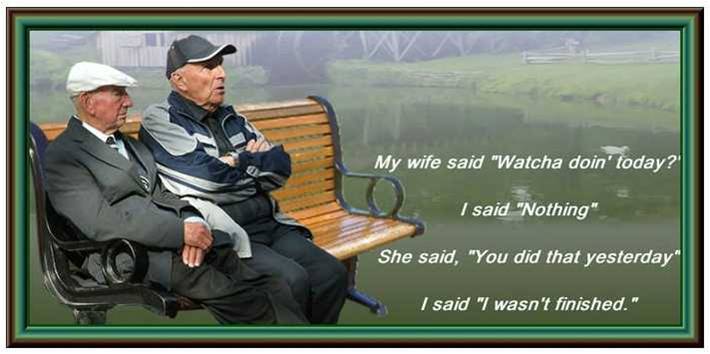Leadership Catalyst Blog
CEOs in my Vistage Peer Group candidly reveal the impact the group has had on their businesses
All Blog Posts, Vistage Peer Groups / 13.02.2012
A little over a year ago, I submitted a post citing research that Vistage CEOs outperformed their non-member peers. (http://theleadershipcatalyst.wordpress.com/2010/10/31/research-backs-claims-that-vistage-ceos-outperform-their-nonmember-peers). The bottom line of that article was that
“… in one of the toughest economies in history, Vistage member companies averaged 5.8 % revenue growth, while nonmembers averaged a (9.2%) revenue decline. In future posts, we will explore the factors that contribute to that sizeable performance difference.”
The purpose of today’s post is to make good on that promise. Most of the CEOs who have been in the Vistage Peer Group that I chair have seen significant improvements in their business since they joined. Our group currently has 18 members from a diverse set of industries and backgrounds and businesses that range in size from $5M to over $800M in annual revenues. To better understand how belonging to Vistage increased their effectiveness and enhanced their lives, I took a little flip camera to one of our monthly executive coaching sessions and asked them. (To see all 12 videos, click on the CEO VIDEOS tab at the top of the page.)
For purposes of this blog post, I selected the responses of 3 CEOs from varying company sizes, industries, and business models. Some were struggling a year ago, and others were doing well. All are doing better now and point to their Vistage membership as a key factor in their successes. Below is a brief outline of their situations and links to their 2 minute YouTube videos where they share how Vistage made a difference.
Gene Earhart is the CEO of Wellington Security Systems, a small family business (< $5M) he owns and operates in partnership with his brother-in-law. Gene is a lifelong entrepreneur, who decided to start this business with his family before finishing college. His company designs, installs, and services electronic security systems for the commercial market, and they have 10 employees in a single location. He credits Vistage with helping him turnaround his company to achieve the most profitable year in their 30-year history.
Click here to see a 2 minute YouTube video of Gene telling his story.
Mike Martin is the CEO and owner of Carlson & Stewart Refrigeration ($10 – $25M), which designs, installs, and services industrial and commercial refrigeration systems. An engineer by training, he has worked most of his career at his company, and bought it and became CEO about 8 years ago. Based in Marshall MN, he has about 50 employees in 3 locations in Minnesota and South Dakota. He says that he would not have been able to double the size of his business last year without Vistage.
See Mike’s 2 minute YouTube video by clicking here.
Jim Fisher is the CEO of Midwest Sign, a privately owned business ($100M+) that distributes sign making equipment and supplies. They have about 200 employees in 9 locations throughout the western half of the U.S.. Jim is trained as an accountant, and has spent most of his Career with Midwest. He was thrust into the CEO position about 5 years ago with the sudden and unexpected death of the beloved company owner and founder. After being pounded by the recession, he and his team have hit the restart button on their growth engine, and last year they achieved double-digit growth and record profitability. He points to Vistage as helping him become more strategic, getting him more on top of the business, and showing him how to get a lot more done in less time.
Click here to see more about how Vistage has helped Jim elevate his game as a CEO.
A key theme that cuts across all of these stories is that “None of us is as smart as all of us”. Having an advisory board of fellow CEOs that have your back and challenge your thinking is a tremendous competitive advantage.
Read More >>A Death in Cupertino | The Right Kind of Tyrant
All Blog Posts, Motivation, Vistage Peer Groups / 11.10.2011
“ Remembering that I’ll be dead soon is the most important tool I’ve ever encountered to help me make the big choices in life; because almost everything —all external expectations, all pride, all fear of embarrassment or failure — these things just fall away in the face of death, leaving only what is truly important. Remembering that you are going to die is the best way I know to avoid the trap of thinking you have something to lose.
You are already naked. There is no reason not to follow your heart.”
Steve Jobs
1955-2011
Founder and CEO of Apple
From his Stanford University Commencement Address, 2005
Picking an article to share with you about the passing of Steve Jobs is an impossible task with so many that knew him sharing their impressions on one of the most important entrepreneurs in history.
We have a saying in Vistage: “We invite CEOs to our group but human beings show up.” To get a sense of what was important to this truly remarkable and essestial human being, I’d like to share with you the 15 minute video of his 2005 Stanford Commencement speech. I found it incredibly inspirational, and I hope you will share it with your friends, family and employees.
This inspiring speech, however, should not blind us to the fact that Steve Job’s management style was often very different from the warm, fuzzy and friendly feeling you get from using his products or visiting the Apple store at the mall. For some insights into the management style that made Apple the most valuable company in America, check out this article which suggests that if Steve Jobs was often a hard man to work for, he was, in fact, “The Right Kind of Tyrant.”
Thanks, Steve, for all you have given us. Rest in Peace
Why I Admire CEOs of Small, Privately Held Companies
All Blog Posts, Vistage Peer Groups / 04.02.2011
Recently I attended a 30th anniversary celebration honoring 3 colleagues from my former company, PDI Ninth House. Like me, they had spent most of their careers working with Global 1000 firms all over the world. We shared memories of jet setting around the globe, working with top executives at major companies throughout the US, Asia, Europe, and the Middle East.
People were naturally curious about why, with all of my Global 1000 Company experience, I preferred to work with CEOs of small privately held companies. The short answer to that question is that I admire their courage and their total commitment to the success of their business and their people.
Jay Goltz expands upon this point in a New York Times article entitled “There are Two Kinds of CEOs” that appeared February 2, 2011. The article features a conversation between the writer and Rafael Pastor, the chairman and chief executive of Vistage, a leading organization of chief executives. They agreed that one of the biggest differences between CEOs of big public companies and CEOs who run small privately held companies is how connected the CEO is to the success of the business. While CEOs of both types of companies have significant upside consequences, the consequences of a business downturn are far more severe for the small private company CEO.
As Jay Goltz explains:
“When things get tough, instead of getting multimillion-dollar payouts to quit, many small-company C.E.O.’s are compelled to put even more money into the business. Mr. Pastor of Vistage recently polled the organization’s members on this question: “During this economic downturn, did you at any time pledge personal assets or invest personal money into your company to help weather the storm?” Forty-six percent said yes.
To many, betting the house may seem an insane risk to take. And maybe it is. But if small-business owners weren’t willing to take that risk, there would be far fewer small businesses in America. You see, many entrepreneurs are what I would call “all in”: all of their money, most of their time, and most of their ego and self worth and pride are involved. Sometimes they put too much in, at the expense of their families and general well-being.
But the fact is that when small company chief executives fail, they often face dire consequences. And that’s an aspect of business ownership that is rarely noted in the glamorized view of entrepreneurship that we frequently see portrayed. Nor is it fully understood by public officials who always seem eager to have small businesses borrow more aggressively and hire more aggressively.”
Read More >>A few weeks ago I was asked to speak to a group of executives in career transition about how to keep themselves engaged and on top of their game throughout their job searches. While transition is described by many as a “real growth experience” once they have landed, during the search the majority say that “looking for a job is the most miserable job they have ever had”. At some point, almost everyone finds themselves “miserable” and feeling stuck or unmotivated.
One of my favorite leadership books is by Patrick Lencioni and is entitled “Three Signs of a Miserable Job”. It is a parable about a CEO who retires earlier than expected after abruptly selling his company. Retirement is not an easy transition for him, and after moving to the mountains to pursue his passion for skiing, he goes back to work managing a local, rundown pizza parlor. Along the way, he learns a number of lessons about how to engage and motivate people to dramatically improve business results.
In his book, Lencioni summarizes the three signs of a miserable job on pages 221-222 as follows:
“Anonymity: People who see themselves as invisible, generic, or anonymous cannot love their jobs, no matter what they are doing.”
“Irrelevance: Everyone needs to know that their work matters to someone. Anyone. “
“Immeasurement: Without a tangible means of assessing success or failure, motivation eventually deteriorates as people see themselves unable to control their own fate.”
Lencioni’s lessons are equally valuable in preventing you from becoming miserable and disengaged during your career transition. This is the first of a three part series with tips on what to do when you see each of these signs during your job search, and how to avoid becoming the people in the above picture.
Avoiding Anonymity: There is an old saying that “If you are what you do, who are you when you don’t?”  Most executives have put a disproportionate share of their eggs in the career basket, and it is easy to feel invisible when they no longer have a job. Networking and social situations in general can be uncomfortable for people feeling embarrassed about being unemployed. Also, executives are not used to people not immediately returning their calls or emails. Finally, many of their friends were work-related, and they have lost a primary source of community. A natural reaction is to focus on home improvement projects or individual hobbies, and further inadvertently make themselves more invisible, and ultimately more miserable.
Most executives have put a disproportionate share of their eggs in the career basket, and it is easy to feel invisible when they no longer have a job. Networking and social situations in general can be uncomfortable for people feeling embarrassed about being unemployed. Also, executives are not used to people not immediately returning their calls or emails. Finally, many of their friends were work-related, and they have lost a primary source of community. A natural reaction is to focus on home improvement projects or individual hobbies, and further inadvertently make themselves more invisible, and ultimately more miserable.
♦♦♦♦♦♦♦♦♦♦♦♦♦♦♦♦♦♦♦♦♦♦♦♦♦♦♦♦♦♦♦♦♦♦♦ LEADERSHIP CATALYST TIPS ♦♦♦♦♦♦♦♦♦♦♦♦♦♦♦♦♦♦♦♦♦♦♦♦♦♦♦♦♦♦♦♦♦♦♦
To avoid anonymity as a source of misery during your career transition, do the following:
- Develop a concise career brand or identity statement. When people ask you what you do, don’t lead with ”I am unemployed” or “I am in transition” or “I used to work for…”. Lead with your identity statement and then mention you are in transition and the specific type of opportunity you are seeking. For practical help on this, go to http://www.careerdistinction.com/
- Get involved in groups that will provide a sense of community (e.g. church groups, exercise classes, clubs, volunteer organizations, non-profit boards, transition support groups, your kids activities). The key is to find a group of people who value you for who you are (not for what you do) and miss you when you are not there.
- In social gatherings with friends, give a quick update of your status and move on. People want to know but are uncomfortable asking. On the other hand, they don’t want to feel that your primary purpose for coming is to “network”.
- Maintain a healthy balance between social and job search activities. Career transitions currently are averaging 13 months–They are a marathon and not a sprint. If you focus all of your energy on your job search, you may burn out. If you don’t spend enough time on it, you won’t make any progress.
♦♦♦♦♦♦♦♦♦♦♦♦♦♦♦♦♦♦♦♦♦♦♦♦♦♦♦♦♦♦♦♦♦♦♦♦♦♦♦♦♦♦♦♦♦♦♦♦♦♦♦♦♦♦♦♦♦♦♦♦♦♦♦♦♦♦♦♦♦♦♦♦♦♦♦♦♦♦♦♦♦♦♦♦♦♦♦♦♦♦♦♦♦♦♦♦♦♦
Read More >>Algebraic Proof that Tubby Smith’s Gophers became the Best Team in the Country after working with a Leadership Catalyst!
All Blog Posts, Change, Coaching, Motivation, Team Building / 02.04.2010
On March 1st, I posted a blog about Tubby Smith bringing in a Leadership Catalyst (sports psychologist) after winning only 3 of 10 Big Ten games. On the eve of the final four, it’s time to assess whether the team really improved after that.
The gophers showed dramatic improvement, winning 7 of their last 10 conference games. They ended up beating every Big Ten team making the NCAA tournament, including impressive wins in the Big Ten Tournament against #11 MSU and #6 Purdue, which won the gophers their own invitation to the “Big Dance”. They were the only team in the nation to beat two of the Final Four teams (Butler and MSU) and beat teams that beat Duke (Wisconsin) and beat West Virginia (Purdue). According to the Algebraic Transitive Property of Inequalities (see proof below), that makes the Gophers the best team in the nation.
There you have it – mathematical (and tongue in cheek) proof that the Gophers are #1.
Congratulations Tubby, on your 17th consecutive 20 win season (21W – 14L)!
♦♦♦♦♦♦♦♦♦♦♦♦♦♦♦♦♦♦♦♦♦♦♦♦♦♦♦♦♦♦♦♦♦♦♦ LEADERSHIP CATALYST TIPS ♦♦♦♦♦♦♦♦♦♦♦♦♦♦♦♦♦♦♦♦♦♦♦♦♦♦♦♦♦♦♦♦♦♦♦
According to the Transitive Property of Inequalities,
If a < b and b < c, then a < c
Likewise:
If a > b and b > c, then a > c
If Minnesota > Wisconsin and Wisconsin > Duke, then Minnesota > Duke
If Minnesota > Purdue, and Purdue > West Virginia, then Minnesota > West Virginia
Minnesota > Butler
Minnesota > Michigan State
Therefore,
Minnesota > All Final Four Teams
♦♦♦♦♦♦♦♦♦♦♦♦♦♦♦♦♦♦♦♦♦♦♦♦♦♦♦♦♦♦♦♦♦♦♦♦♦♦♦♦♦♦♦♦♦♦♦♦♦♦♦♦♦♦♦♦♦♦♦♦♦♦♦♦♦♦♦♦♦♦♦♦♦♦♦♦♦♦♦♦♦♦♦♦♦♦♦♦♦♦♦♦♦♦♦♦♦♦
Why Can’t Executives Agree on their High Potential Talent?
Assessment, High Potential Programs, Succession Planning, Talent Management / 21.03.2010

Heated Talent Review
In many of the talent review discussions I have facilitated at the top of organizations, I have been struck by how difficult it is for leadership teams to agree on who at one or two levels level below them are their best bets for the future. Often times it is because they are all using their own definitions of potential. Some are touting the results their candidates achieve, while others focus on the leadership behaviors theirs exhibit. Some highlight their candidate’s ability to see the big picture and handle complexity while others emphasize the experiences their candidates have had to prepare them for the next role. So who is right? All of them! But until they start making “apples to apples” comparisons, little progress will be made in these discussions.
When facilitating talent discussions, it is much easier to come to agreement if you clearly define the four aspects of talent that need to be assessed and discussed (see below). Then compare your candidates on each of these aspects so you can agree on both the strengths and the gaps of each candidate. Otherwise, it is like trying to agree on which person is bigger, when one is measuring height and another is measuring weight.
♦♦♦♦♦♦♦♦♦♦♦♦♦♦♦♦♦♦♦♦♦♦♦♦♦♦♦♦♦♦♦♦♦♦♦ LEADERSHIP CATALYST TIPS ♦♦♦♦♦♦♦♦♦♦♦♦♦♦♦♦♦♦♦♦♦♦♦♦♦♦♦♦♦♦♦♦♦♦♦
To foster more productive talent review discussions, install a common language for assessing and discussing talent using the following four definitions:
- Performance—The extent to which the person achieved their objectives (“The What”) and demonstrated the appropriate leadership behaviors. (“The How”). Most agree that both are important and neither is sufficient for sustainable performance.
- Potential—A person’s capacity to be a top performer in a more senior role. Do they have the mental horsepower to handle the greater complexity, the emotional intelligence to lead and influence others, the adaptability to manage change and handle stress, and the learning agility to learn from experience?
- Readiness—The extent to which a person has had the experiences necessary to mold their raw potential into the capabilities required to handle the additional challenges and responsibilities at the next level.
- Fit—The extent to which a person is a good fit for the organization’s culture, leadership team, and current business situation.
Next Monday: How do you communicate to your High Potentials?
♦♦♦♦♦♦♦♦♦♦♦♦♦♦♦♦♦♦♦♦♦♦♦♦♦♦♦♦♦♦♦♦♦♦♦♦♦♦♦♦♦♦♦♦♦♦♦♦♦♦♦♦♦♦♦♦♦♦♦♦♦♦♦♦♦♦♦♦♦♦♦♦♦♦♦♦♦♦♦♦♦♦♦♦♦♦♦♦♦♦♦♦♦♦♦♦♦♦
Read More >>Is your high potential leadership program on the “Fast Track to Failure”?
All Blog Posts, High Potential Programs, Leadership Development, Succession Planning, Talent Management / 14.03.20102 comments
Most corporations are worrying about how to accelerate the development of successors for the expected exodus of “baby boomer” executives. While the impact of the financial crisis on most 401k plans may have delayed this exodus, the demographics haven’t changed, and within 5 to 10 years, a huge number of senior leaders will need to be replaced.
In working with dozens of companies on succession management and leadership acceleration programs, I have found that most are focusing almost exclusively on the organizational side of the equation—How to identify leaders with high potential (HIPOs) and then accelerate their readiness to step into the next role. Seldom, however, is enough attention paid to the individual side of the equation. The underlying assumption is that being tapped as a high potential is a huge benefit to the individual, and the individual’s aspirations as well as the significant downsides of being labeled a “HIPO” often are ignored.
Bottger and Barsoux of INSEAD spell out some of these potential hazards to HIPOs in their brief article entitled “Fast Track to Failure” in last month’s Conference Board Review. It is an open letter to newly anointed HIPOs, warning them of 4 inherent traps that can derail the most promising of careers, and well worth a quick read.
♦♦♦♦♦♦♦♦♦♦♦♦♦♦♦♦♦♦♦♦♦♦♦♦♦♦♦♦♦♦♦♦♦♦♦ LEADERSHIP CATALYST TIPS ♦♦♦♦♦♦♦♦♦♦♦♦♦♦♦♦♦♦♦♦♦♦♦♦♦♦♦♦♦♦♦♦♦♦♦
To make sure your high potential leadership program is on the fast track to success:
- Clearly define what is meant by “potential” vs. “performance” or “readiness”
- Accurately measure potential
- Make high performance a requisite for becoming and remaining a “HIPO”
- Avoid labeling people as “High Potential” too early
- Make sure you are having the right conversations with HIPOs so they know they are valued and to assure your expectations are in line with their aspirations.
- Accelerate their readiness through feedback, coaching, and action learning teams
I will expand on each of these in my future Monday morning blog posts.
♦♦♦♦♦♦♦♦♦♦♦♦♦♦♦♦♦♦♦♦♦♦♦♦♦♦♦♦♦♦♦♦♦♦♦♦♦♦♦♦♦♦♦♦♦♦♦♦♦♦♦♦♦♦♦♦♦♦♦♦♦♦♦♦♦♦♦♦♦♦♦♦♦♦♦♦♦♦♦♦♦♦♦♦♦♦♦♦♦♦♦♦♦♦♦♦♦♦
Read More >>Toyota and GM: Getting Bigger at the Expense of Getting Better?
All Blog Posts, Business, Strategy / 05.03.2010
 The February 24th edition of Economist Magazine ran an article entitled “The Machine that ran too hot: The woes of Toyota, the world’s biggest car company, are a warning to rivals.” In the article, James Womack, one of the authors of “The Machine that Changed the World”, a book about Toyota’s innovations in manufacturing, dates the origin of its present woes to 2002, when it set itself the goal of raising its global market share from 11% to 15%. Mr. Womack says that the 15% target was “totally irrelevant to any customer” and was “just driven by ego”. In other words,, Toyota got itself in trouble when quality became subordinate to another goal: Selling more cars than GM.
The February 24th edition of Economist Magazine ran an article entitled “The Machine that ran too hot: The woes of Toyota, the world’s biggest car company, are a warning to rivals.” In the article, James Womack, one of the authors of “The Machine that Changed the World”, a book about Toyota’s innovations in manufacturing, dates the origin of its present woes to 2002, when it set itself the goal of raising its global market share from 11% to 15%. Mr. Womack says that the 15% target was “totally irrelevant to any customer” and was “just driven by ego”. In other words,, Toyota got itself in trouble when quality became subordinate to another goal: Selling more cars than GM.
GM apparently is not heeding the warning. WSJ reported on March 3rd “Feeling Heat From Ford, GM Reshuffles Managers“. Ford’s February monthly U.S. sales surpassed GM’s for the first time in 50 years. Hours after the sales results were released, GM announced its second executive shuffle in three months. It appears as though GM is falling into the same trap as Toyota did when it shifted it’s priority from safety and customer satisfaction to surpassing its rival in sales. As Toyota and others (Merck, Motorola, HP) have shown, doing so can lead to their downfall.
♦♦♦♦♦♦♦♦♦♦♦♦♦♦♦♦♦♦♦♦♦♦♦♦♦♦♦♦♦♦♦♦♦♦♦ LEADERSHIP CATALYST TIPS ♦♦♦♦♦♦♦♦♦♦♦♦♦♦♦♦♦♦♦♦♦♦♦♦♦♦♦♦♦♦♦♦♦♦♦
Don’t focus on getting bigger at the expense of getting better.
- Increasing scale should not be seen as the end goal, but rather as an outcome of pursuing your core purpose.
- Great leaders pursue growth in performance, distinctive difference, creativity and people, knowing sales growth will follow.
- Focusing on a noble core purpose and growth in this way will engage the hearts and minds of your people in a way that financial BHAGs never will.
♦♦♦♦♦♦♦♦♦♦♦♦♦♦♦♦♦♦♦♦♦♦♦♦♦♦♦♦♦♦♦♦♦♦♦♦♦♦♦♦♦♦♦♦♦♦♦♦♦♦♦♦♦♦♦♦♦♦♦♦♦♦♦♦♦♦♦♦♦♦♦♦♦♦♦♦♦♦♦♦♦♦♦♦♦♦♦♦♦♦♦♦♦♦♦♦♦♦
Read More >>Tubby Smith, U of MN BB Coach, Hires Catalyst
All Blog Posts, Change, Coaching, Motivation, Team Building / 01.03.2010
 Tubby Smith, the University of Minnesota men’s basketball coach has 16 consecutive 20 win seasons for a reason. He is a great coach, and he recognizes when it is time to find a catalyst to help unlock the potential of his team. This year’s 17-11 team is likely not performing up to its true potential because 7 of their 11 losses were decided by less than 5 points. They have had major leads over ranked teams such as Michigan State and Purdue, only to see them erased in the final seconds. In fact, they have only won 4 of 11 close games this season.
Tubby Smith, the University of Minnesota men’s basketball coach has 16 consecutive 20 win seasons for a reason. He is a great coach, and he recognizes when it is time to find a catalyst to help unlock the potential of his team. This year’s 17-11 team is likely not performing up to its true potential because 7 of their 11 losses were decided by less than 5 points. They have had major leads over ranked teams such as Michigan State and Purdue, only to see them erased in the final seconds. In fact, they have only won 4 of 11 close games this season.
In an effort to find a remedy to the mental breakdowns his team was having with the game on the line, coach Smith brought in a sports psychologist according to Myron Medcalf of the Minneapolis Star Tribune. Players report that he taught them to use “positive affirmations” and envision good outcomes in tough stretches. They further claim that the approach helped them survive a late game surge by the fighting Illini in a 62-60 victory on Saturday.
For many, “positive affirmation” conjures up images of SNL’s Stuart Smally (aka Senator Al Franken) looking into the mirror and saying “…and darn it, people like me”. However, there is a lot more science to them than that, and no doubt you have recently observed Olympians mentally rehearsing flawless performances on the slopes and on the ice before they compete. This same technique works in coaching executives before tough board meetings or critical or contentious negotiations.
♦♦♦♦♦♦♦♦♦♦♦♦♦♦♦♦♦♦♦♦♦♦♦♦♦♦♦♦♦♦♦♦♦♦♦ LEADERSHIP CATALYST TIPS ♦♦♦♦♦♦♦♦♦♦♦♦♦♦♦♦♦♦♦♦♦♦♦♦♦♦♦♦♦♦♦♦♦♦♦
To increase the odds of success for executives in these critical situations, help them:
- Imagine themselves in the situation
- Anticipate the tough questions and challenges they likely will encounter
- Visualize themselves calmly and effectively responding to those challenges
- Practice responding to those challenges with someone playing an adversarial role.
♦♦♦♦♦♦♦♦♦♦♦♦♦♦♦♦♦♦♦♦♦♦♦♦♦♦♦♦♦♦♦♦♦♦♦♦♦♦♦♦♦♦♦♦♦♦♦♦♦♦♦♦♦♦♦♦♦♦♦♦♦♦♦♦♦♦♦♦♦♦♦♦♦♦♦♦♦♦♦♦♦♦♦♦♦♦♦♦♦♦♦♦♦♦♦♦♦♦
The bottom line is that effective coaches and business leaders recognize when their teams are not performing up to potential, and do not hesitate to find a catalyst to help them get back on track.
Read More >>The HBR IdeaCast on “What Motivates Us” will be very relevant to people struggling with how to motivate their employees, their kids, or themselves. In this 16 minute audio session, Daniel Pink (Author of the new book Drive) explains why much of what we know about motivation doesn’t work. Some of his key points include:
 1) Strong emphasis on carrot and stick motivators are good for simple tasks, but not good for complex cognitive tasks or tasks that require creativity
1) Strong emphasis on carrot and stick motivators are good for simple tasks, but not good for complex cognitive tasks or tasks that require creativity
2) More powerful motivators for complex or creative tasks include assuring people feel that they have a sense of purpose, are making a contribution, are seeing progress, and are growing and getting better at something.
3) De-motivators include doing the same thing over and over without a sense of purpose or progress.
♦♦♦♦♦♦♦♦♦♦♦♦♦♦♦♦♦♦♦♦♦♦♦♦♦♦♦♦♦♦♦♦♦♦♦ LEADERSHIP CATALYST TIPS ♦♦♦♦♦♦♦♦♦♦♦♦♦♦♦♦♦♦♦♦♦♦♦♦♦♦♦♦♦♦♦♦♦♦♦
In several turnaround situations, I have found the key to motivating and engaging employees is to:
- Make them feel valued as people and that they belong
- Help them see how what they do makes a difference, and
- Find a way for them to monitor their own contributions on an ongoing basis.
♦♦♦♦♦♦♦♦♦♦♦♦♦♦♦♦♦♦♦♦♦♦♦♦♦♦♦♦♦♦♦♦♦♦♦♦♦♦♦♦♦♦♦♦♦♦♦♦♦♦♦♦♦♦♦♦♦♦♦♦♦♦♦♦♦♦♦♦♦♦♦♦♦♦♦♦♦♦♦♦♦♦♦♦♦♦♦♦♦♦♦♦♦♦♦♦♦♦
This is especially true now as companies try to re-engage their people after multiple rounds of layoffs, furloughs, and salary cuts. If they don’t, they risk losing their best people when the economy and job market improve.
Read More >>Welcome To My Blog!
All Blog Posts / 24.02.2010
I am a Leadership Catalyst, and will be posting observations and tips about how to unleash the potential of leaders and organizations. More specifically, I will be focusing on how to help leaders build strong teams and engage the hearts and minds of their people. Observations will be taken from my 25+ years of consulting and leadership experience as well as from other publications and posts in the blogosphere. I welcome your comments and appreciate your stopping by!
Brian L. Davis, Ph.D.
Leadership Catalyst
Read More >>





